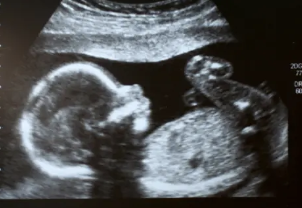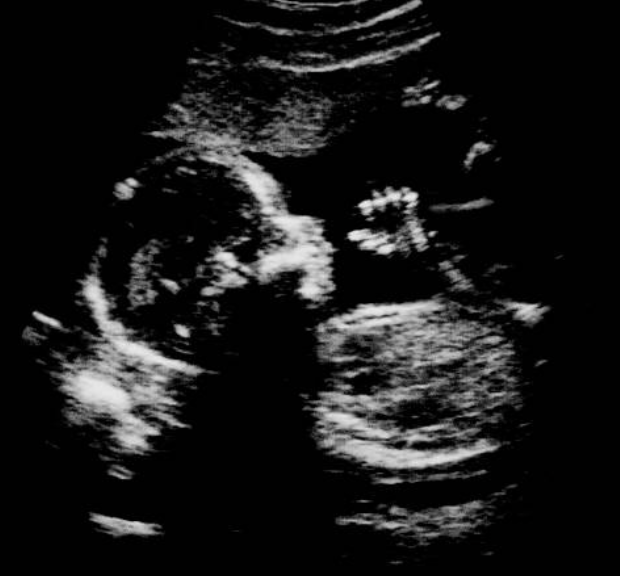In Utero Milestones for Feeding and Language
As a Speech-Language Pathologist with a little Lim on the way, I want to document his feeding and language milestones each week on my Instagram. Starting with the milestones that begin in utero. You heard that right, infants begin preparing for eating and talking in the womb. Read below for important in utero milestones related to feeding and language development.

Hearing
When does hearing develop? By 6 weeks gestation, cells are starting to arrange themselves into what will become ears. By 18 weeks, babies can hear sounds within the womb. Between 27- 30 weeks, babies can hear noise outside the womb and can even be startled by very loud noises. They become particularly sensitive to their mother’s voice and can distinguish it from other voices or noises. Studies measured babies’ heartbeats when exposed to mom’s voice and strangers. The heartbeat increased with mom, and decreased with the stranger; indicating awareness of both but recognition of mom’s voice. For partners, don’t worry- Babies can become sensitive to voices and words that they hear often in the womb, so this isn’t just limited to the mother’s voice. Keep talking, singing, and reading to your little one.
Language Wiring
Humans are hard-wired to learn any language at birth. Studies have suggested that in the later stages of the third trimester, is when babies start to recognize and differentiate between different linguistic patterns, such as the rhythms and intonations of their native language. This early exposure to language helps lay the foundation for language processing after birth. By the end of the first year of life, babies are specialized to process the sounds of their native language or languages and begin to lose their ability to hear the differences between foreign language sounds. It’s never too late to learn a new language, but is easier to do so earlier in life.

Vocalization in the Womb
Can babies vocalize in the womb? The short answer is babies aren’t able to take a breath and fill their lungs with air while in the womb. it’s difficult to know if babies are able to vibrate their cords in the womb and even if they did, the sound wouldn’t be strong enough to detect. However, research shows that they do start to practice facial expressions in the womb. Researchers have focused on observing babies in the womb and crying. They have observed babies widening their jaw, tucking their chin, and letting out three big exhales in a row as the chest rises and head tilts back, ending with a chin quiver. Babies have also been observed to smile in utero. These facial expressions aren’t believed to be intentional or related to any specific stimuli. These are just the baby practicing for laughing and crying after birth.
Hiccups
Believe it or not, babies in the womb do hiccup. It’s believed that this helps develop the muscles needed for digestion and breathing, but this isn’t proven. Fetal hiccups are the baby’s way to trying out all of the new things they can do. It’s an indication that their respiratory system is developing as they are able to inhale and exhale amniotic fluid. It’s also a sign that the baby is developing neurologically because hiccups indicate the activation of the nerve that controls the diaphragm. Lastly, hiccups can be a result of the baby practicing all of the other reflexes that are developing (suckling, thumb sucking, yawning).
Suck/Swallow
An important reflex babies learn in the womb is sucking and swallowing. Babies need this reflex to feed properly after birth. Babies start practicing these reflexes in the womb as early as 12 weeks gestation. They may begin by sucking on their fingers or thumbs, which can be seen on ultrasound. By 20 weeks gestation, most babies have developed a strong sucking and swallowing reflex. Babies may also practice sucking and swallowing by drinking amniotic fluid. This fluid is rich in nutrients and helps to nourish the developing baby. As the baby swallows the fluid, it passes through the digestive system and is eventually excreted as urine.

Tastes
Activation of taste buds starts during the 30th week of gestation when the flavors of the amniotic fluid change based on the mother’s diet. This early activation appears as a first step to shape the preference for sweet, sour, or salty taste, thus affecting the food choices of the future newborn and child. Aim to eat a balanced and varied diet, and choose fresh fruits and vegetables over processed snacks.
Which in utero milestones surprised you the most? Let us know in the comments below. For tips on supporting children’s language development in the home, check out my blog HERE.

2 Comments